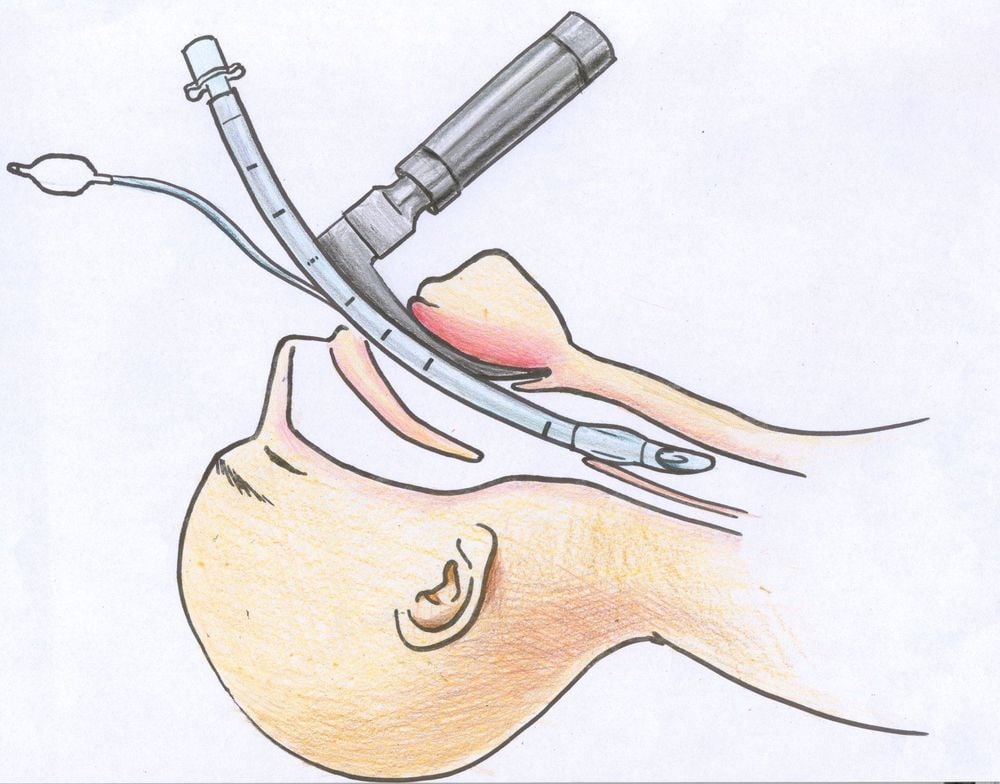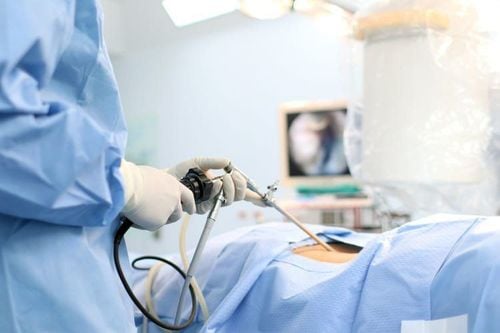This is an automatically translated article.
The article was professionally consulted with resident Doctor Le Thanh Tuan - Gastroenterologist - General Surgery Department - Vinmec Nha Trang International General Hospital.Diaphragmatic rupture is an uncommon injury in blunt abdominal trauma. Once a diaphragmatic rupture has been diagnosed, surgery should be performed to repair the rupture.
1. Traumatic rupture of the diaphragm
The diaphragm plays a very important role in the respiratory function of the body, if an injury occurs, it will weaken the functioning of the respiratory system.Diaphragm rupture can be seen in closed abdominal trauma due to traffic accidents, abdominal wounds caused by stabbing knives, bullets. Diaphragm rupture is an injury to the integrity of the diaphragm, usually a severe trauma that causes the intra-abdominal pressure to rise suddenly, the diaphragm is stretched and ruptured. Rupture of the left diaphragm is common, but the right diaphragm is less likely to rupture due to the protection of the liver.
Through the rupture of the diaphragm, the viscera in the abdomen can enter the chest immediately after the injury or after the trauma for a while, causing a diaphragmatic hernia. Diaphragm rupture is often caused by an injury, so it is often accompanied by many other injuries in the abdomen and thorax, making diagnosis and treatment difficult.
2. Indications for surgery to suture ruptured diaphragm
Diaphragm suture surgery is indicated for cases where the diaphragm is perforated, torn, broken due to trauma, penetrating abdominal wound, after complications of other surgery.3. Perform surgery to suture the rupture of the diaphragm
Before surgery, the patient will be performed basic tests such as blood count, biochemistry, chest x-ray. After that, an intravenous line is placed, a gastric tube is placed, a bladder tube is placed.Technician conducts general anesthesia, intubation

4. Treatment of complications after surgery to suture the rupture of the diaphragm
Follow-up after surgery: After surgery, the patient is treated with antibiotics for 5-7 days Continue to monitor fluid and air through pleural drainage, abdominal drainage Complications and management: Before and during surgery there are may experience septic shock, respiratory failure, cardiac tamponade due to late diagnosis. Treatment is by limiting the patient's position change, quickly releasing the pleural space, if necessary, by placing a pleural drainage first, coordinating with the anesthesiologist to perform surgery and resuscitation.After surgery, there may be some complications such as:
Air leak, pleural bleeding: Treatment depends on the amount of blood and air out, Gastrointestinal leak: When the leak is small, follow up with internal treatment Massive fistula, intra-abdominal abscess, peritonitis: It is necessary to carry out surgery to re-evaluate organ damage, treatment depends on the nature and extent of damage Vinmec International General Hospital is one of the hospitals. not only ensure professional quality with a team of doctors, modern equipment and technology, but also stand out with comprehensive and professional medical examination, consultation and treatment services; civilized, polite, safe and sterile medical examination and treatment space.
Please dial HOTLINE for more information or register for an appointment HERE. Download MyVinmec app to make appointments faster and to manage your bookings easily.














